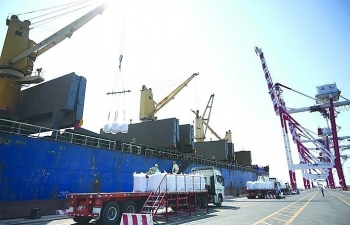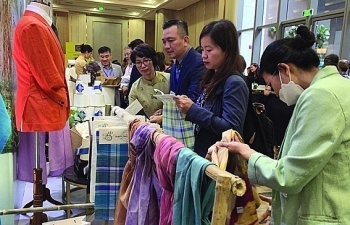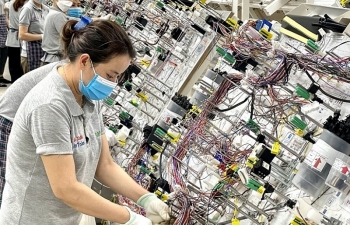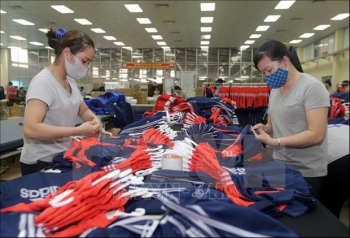Automotive import duty reduction schedule - Concern for domestic production
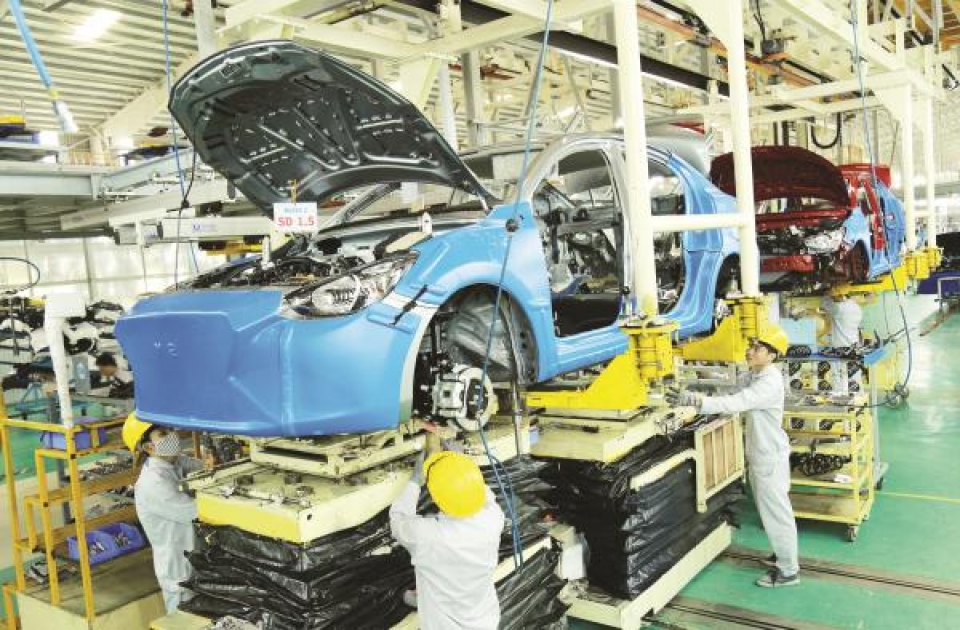 |
This is considered as the moment that will be a "challenge" for our domestic automotive industry in the context of the downward trend of the duty rate and the upward trend of completely built car imports. A question raised is that whether there are any companies who want to invest in producing automobiles, and how the problem of foreign exchange balance, reducing the trade deficit will be calculated, in the increasing trend of completely build-up car imports.
Duty rate reduce, automotive imports will surely rise
Vietnam’s automotive market in 2016 has noted a foreseen fact that is the rapid increasing trend of automotive imports from neighboring countries, especially Thailand. Currently, Thailand, who was ranked 4th in 2015, has surpassed China and Japan and reached the first place in the quantity of automobiles imported into Vietnam (in 7 months of 2016, the number of automobiles exported from Thailand into Vietnam was 18,840 cars, an increase of 55.4%).
Thailand has the most developed automotive industry of ASEAN, with diversified products, good quality, low production costs, low transportation costs, etc. More importantly, the vehicles imported from Thailand have a huge price advantage, because the duty rate of completely built cars imported from ASEAN into Vietnam has decreased to 40% since 2016. This trend is forecasted to continue to rise, in the view of the fact that according to the schedule, in 2017, the import duty rate is going to continue to drop to 30% and the excise taxes rate will fall by 5% (from 45% to 40% for vehicles with a cylinder capacity of 1.5L). Especially in 2018, the import duty rate will be reduced to 0% and the excise taxes rate will continue to decrease by 5% (for vehicles with a cylinder capacity of 1.5L and 2.0L).
Many experts in this field agree that the wave of vehicles imported from ASEAN (especially Thailand and Indonesia) will overflow into Vietnam in the near future.
Besides ASEAN Trade in Goods Agreement (ATIGA) and the Agreement between ASEAN and South Korea, since December 2015, Vietnam – Korea Free Trade Agreement (VKFTA) has started taking effect, they support goods from South Korea, particularly machinery and equipment, automobile and components, etc., to lower the tariffs when importing into Vietnam, even to 0%.
Along with that, completely built cars imported from Russia, a relatively new market are getting many incentives from Vietnam – Eurasian Economic Union Free Trade Agreements (VN - EAEU FTA). Vietnam and Russia have signed an Automative Intergovernmental Protocol, under which Vietnam will allow the joint venture between Russia and Vietnam companies to be eligible for duty-free import of completely built cars in order to explore the market capacity and preference, as well as to have duty-free quotas for automotive components and parts within 5 years. This is the period before the moment that the automotive components and parts import duty decreases to 0%, according to VN - EAEU FTA. According to the schedule, Russia will export 2,550 cars in the first 3 years and 13,500 accessories in the first 5 years into Vietnam. Therefore, the quantity of completely built cars exported from the Russia market into Vietnam will also increase in the coming period.
The concern about trade deficit
The picture of Vietnam's automotive market in the first 9 months of 2016 showed the need to own a car in Vietnam was huge, despite high and rising automotive prices. After 9 months of 2016, 214,398 cars were sold in the whole market, up by 31% over the same period last year.
The general assessment of the automotive companies is the growth rate in 2016 will be very high, be equal to the rate in 2015 (the year that Vietnam's automotive market achieved the highest growth rate ever with 244,914 cars, an increase of 55%, imported cars increased by 77%).
In the next period, Vietnam's automotive market will continue to grow well, thanks to the stable economic development, the increasing demand for cars. However, the rapid growth of automotive products leads to concerns about traffic jams. Especially with the increasing trend of the current completely built car imports, the concern about the automotive trade deficit was the problem that should be taken into account.
In fact, the trade deficit of Vietnam in recent years has improved overall, in the first 9 months of 2016, Vietnam has a trade surplus of nearly $US 2.76 billion; Vietnam’s trade deficit with China also fell slightly in recent times, but the deficit with South Korea and the ASEAN countries rose sharply.
A further analysis showed that the structure of Vietnam imports consist of three main components: Capital goods (e.g. machinery, raw materials), intermediate goods and consumer goods, of which consumer goods account for 10%. South Korea, ASEAN, and China are the three partners with that Vietnam's trade deficit is highest. In the case of ASEAN, Vietnam's trade deficit is not too high, but in some particular items, and a number of countries such as Thailand, Vietnam’s trade is not only in deficit, but also in growing deficit. The comments of the experts consider that this trend is related to the fact that Vietnamese consumers’ incomes are growing, leading to the increasing demand of luxury and expensive goods such as automobiles, etc.
Therefore, in the context of the downward trend of import duty of ASEAN and South Korea, the consumer item that is not encouraged as automobiles will increase rapidly, causing a significant pressure for the balance of trade.
In 2014, Vietnam spent over $US 1.581 billion (up by 119%) to import 70,956 automobiles (increase by 102%); in 2015, Vietnam spent $US 1.9 billion (up by 88.6%) to import 125,534 completely build-up cars (up by 77%). In 9 months of 2016, due to various reasons related to the change and instability of policies, the quantity and value of imported automobiles decreased (by 7.3% in quantity and by 16.9% in value), but Vietnam also spent $US 1.75 billion to import 77,515 cars.
According to the data of the Vietnam Automotive Registry, Vietnam in 2015 had 282,300 new vehicles registered, it is expected in 2016 to be 344,600 vehicles. According to the forecasts, by 2020, Vietnam GDP per capita will reach about $US 3,000 and the country will enter the stage of universal automobile ownership. Domestic market demand in 2025 may rise to 500,000-600,000 cars/year. If domestic production cannot compete, automotive imports will increase, the annual amount of foreign exchange spending to import automobile is estimated to be very high, impacting on the trade deficit problem in a significant way, having a bad effect on the economy.
The problem of domestic investment
In 2014, the Government approved the Vietnam Automotive Industry Development Strategy and Planning until 2025 and the vision until 2035, identifying the automotive industry as important to the country's economy, which stressed the need to encourage the development of the automotive industry with stable, consistent and long-term policies.
In the field of domestic automobile production investment, Vietnam businesses have 2 big names, i.e. Xuan Kien Automobile Company (Vinaxuki) and Truong Hai Automobile Company (Thaco). While Vinaxuki is pursuing the production of tourist cars made in Vietnam, Thaco is cooperating with international brands without a production base in Vietnam and ASEAN. Thaco’s method is that this company must have the market share, then it will return to invest in production, manufacture simple parts first, then make more difficult and expensive parts, and gradually infiltrate into the production chains of international brands, increase the production in Vietnam as a way to penetrate the ASEAN market.
With those strategies, although spending not less money and effort on pursuing the automotive production, so far, Vinaxuki still has many difficulties, and Thaco still runs after the goal of developing automotive production before conquering the ASEAN market.
According to Mr. Tran Ba Duong, Board Chairman of Thaco, in Vietnam, the enterprises taking the lead in car-building are Thaco and Toyota. While Toyota can import the vehicles from the ASEAN countries where they have production facilities, otherwise Thaco will have nothing unless they produce in Vietnam. Thus, Thaco will try to do its best, determine to push its production up and reduce costs to achieve the production goal.
And Thaco have been spending no less money and effort to sustain and grow in the automotive manufacturing industry in Vietnam. The expected total investment plan for the period from 2016 to 2018 of Thaco is 30,110 billion VND, including 20,372 billion VND investing in Chu Lai complex and 9,738 billion VND investing in the distribution system and retail showroom. For example, Thaco has built a new plant with a capacity of over 100,000 cars/year, and changed in technology and design comprehensively in order to enhance the quality of buses following the international standards and be export oriented. The company also plans to produce mini buses (with 12 -16 seats). In the case of sedan cars, besides the Mazda car-building plant in the complex, Thaco is going to build a brand new Mazda plant with greater capacity, up to 100,000 vehicles per year. Along with that, Thaco will also develop a complex of support industrial plants to supply components for car-building plants to sell automobiles in the domestic market and take part in export activities.
In the case of Toyota Vietnam, although still insisting to continue to produce automobiles in Vietnam, in the last period, this company did not have any clear actions showing their goal yet. They even enhance their car import activities, especially pickup trucks in the field of Toyota Vietnam. This joint venture is waiting for more specific policy decisions of the Government to decide whether they will produce or import automobiles.
Thinking that time is running out, another company, who "specializes" in importing completely built automobiles, is making strategic moves to invest in manufacturing and assembling automobiles in Vietnam, which is Hyundai Thanh Cong. Currently, this company is building 3 models at its automobile plant located in Ninh Binh. Not stopping there, Hyundai Thanh Cong has achieved initial agreements and completed important steps in cooperation with Hyundai to invest in the manufacture and assembly of Hyundai products in Vietnam, making Vietnam become the central supply of Hyundai in the Asia-Pacific region.
Mr. Tran Ba Duong said that, not only businesses need to execute projects and give recommendations quickly, but also the Government should issue decisions early to not miss the opportunities, because no need to wait for 2018, from 2017, when the automotive import duty is reduced to 30%, the car-build industry of the existing businesses in Vietnam would face with many difficulties.
| With the moment that the import duty rate in the area will be reduced to 0% fast approaching, the automotive industry of Vietnam still has many difficulties. Despite the rapid growth of the automotive market, Vietnam’s market is only equivalent to 1/2 of the Philippines’, 1/5 of Malaysia’s, 1/10 of Indonesia’s and Thailand’s. Along with that, the other difficulties are the competitive pressures when the integration commitments take effect; the undeveloped industries that support the automotive industry; the human resources not meeting the requirements. |
Related News

Production ensures export of 7.4 million tons of rice this year
14:30 | 06/05/2024 Import-Export
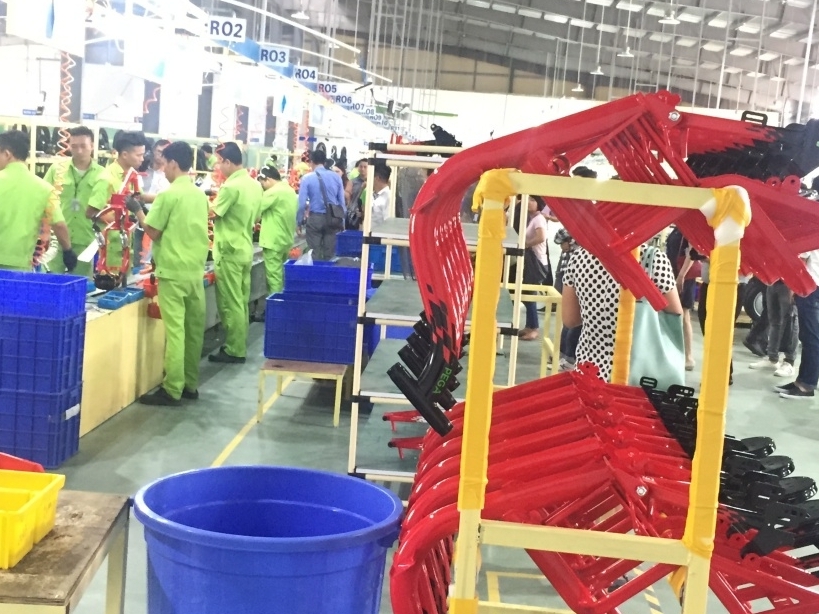
State budget revenue estimated at VND733.4 trillion
14:40 | 06/05/2024 Finance
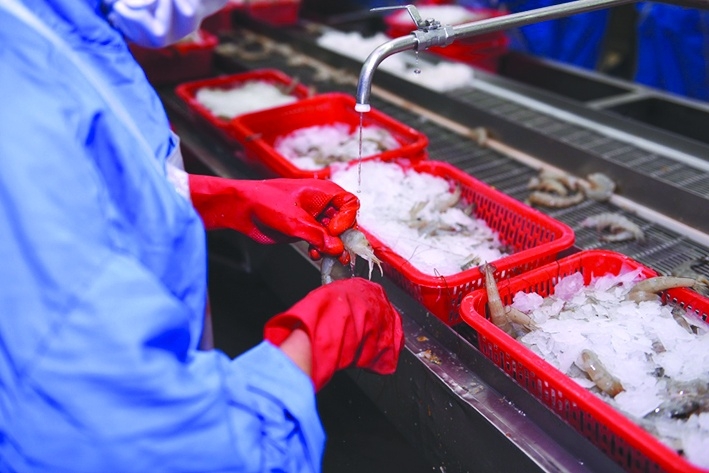
Seafood enterprises encounter problems with specialized inspection
10:37 | 05/05/2024 Import-Export

Make use of the most of favorable factors for economic growth
15:38 | 06/05/2024 Import-Export
Latest News

Textile and garment businesses face difficulties due to lack of domestic supply
15:36 | 06/05/2024 Import-Export

Vietnam leads in export rice prices globally
15:34 | 06/05/2024 Import-Export

More businesses to join Vietnam E-Pavilion
16:34 | 05/05/2024 Import-Export
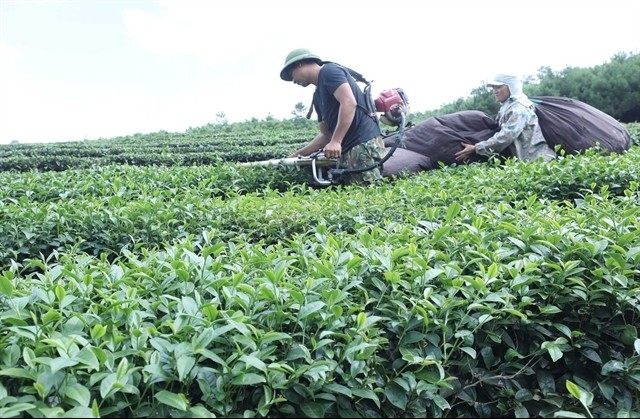
Cooperatives urged to focus on branding to expand exports of organic tea
16:32 | 05/05/2024 Import-Export
More News
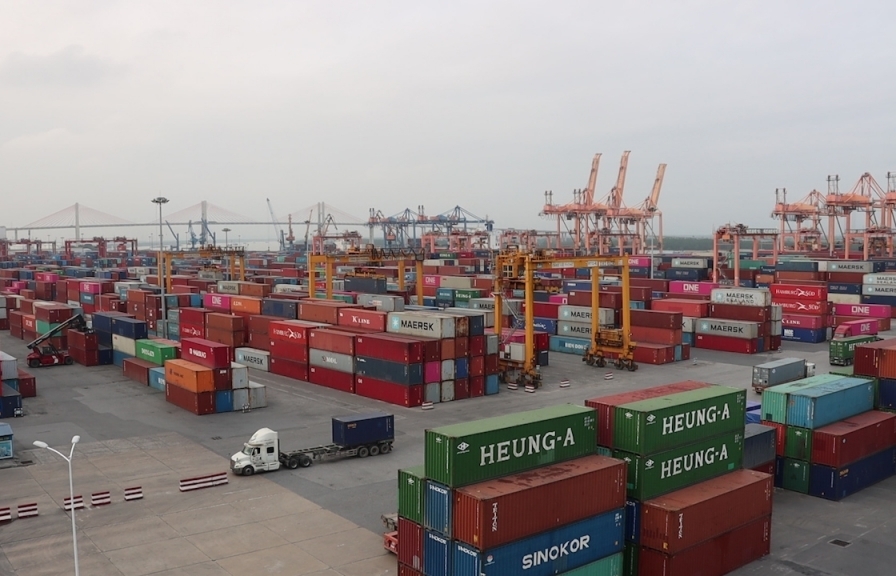
Three groups of export commodities achieved billions of USD
10:36 | 05/05/2024 Import-Export
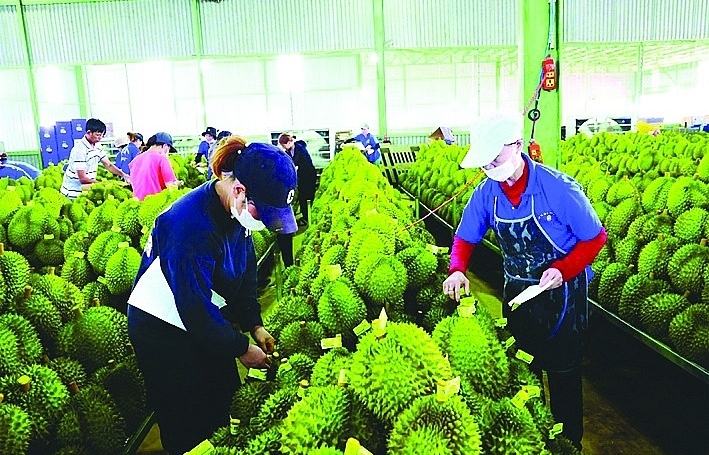
Speed up the process of issuing "passports" for durian exports
15:14 | 04/05/2024 Import-Export
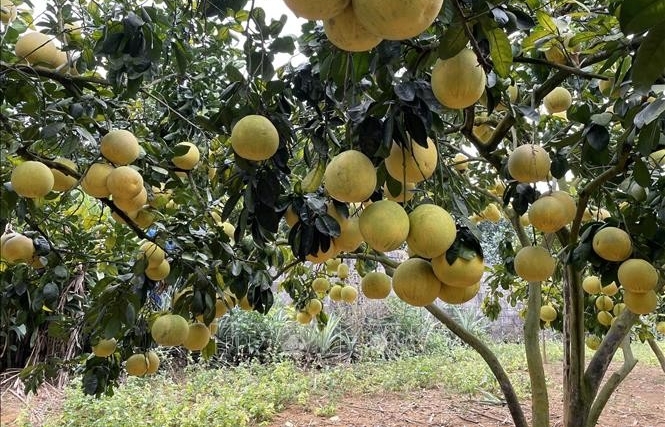
Vietnamese pomelo likely to be exported to Australia
15:12 | 04/05/2024 Import-Export
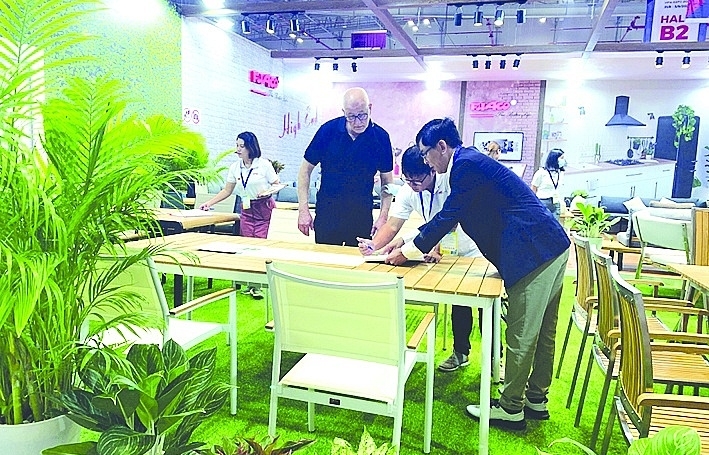
Take advantage of E-commerce leverage for export.
13:48 | 04/05/2024 Import-Export
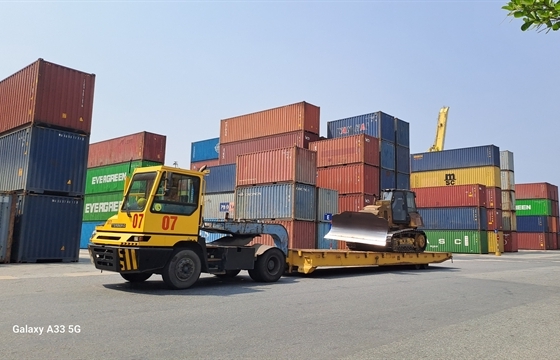
Central beach city to lure investment from potential partners
14:54 | 03/05/2024 Import-Export
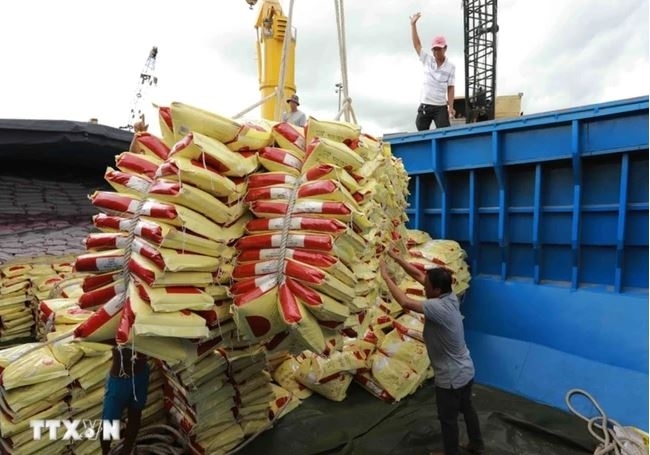
Vietnam to have enough 8 million tonnes of rice for export
14:47 | 03/05/2024 Import-Export

Binh Duong: Fertile ground for logistics businesses
10:16 | 03/05/2024 Import-Export

Some 51,600 new firms established in four months
17:17 | 02/05/2024 Import-Export
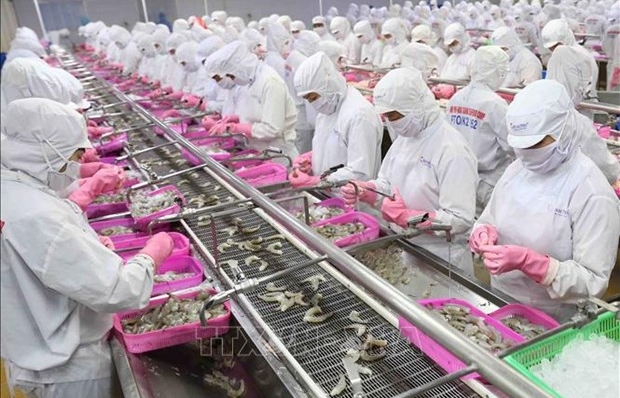
Agro-forestry-aquatic product exports post trade surplus of 4.74 billion USD in four months
17:13 | 02/05/2024 Import-Export
Your care

Make use of the most of favorable factors for economic growth
15:38 | 06/05/2024 Import-Export
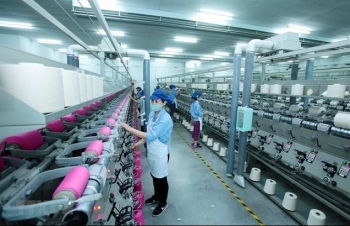
Textile and garment businesses face difficulties due to lack of domestic supply
15:36 | 06/05/2024 Import-Export

Vietnam leads in export rice prices globally
15:34 | 06/05/2024 Import-Export
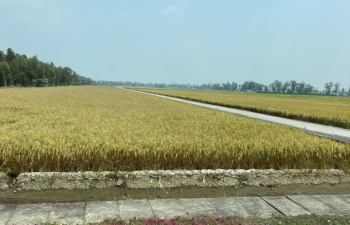
Production ensures export of 7.4 million tons of rice this year
14:30 | 06/05/2024 Import-Export

More businesses to join Vietnam E-Pavilion
16:34 | 05/05/2024 Import-Export

